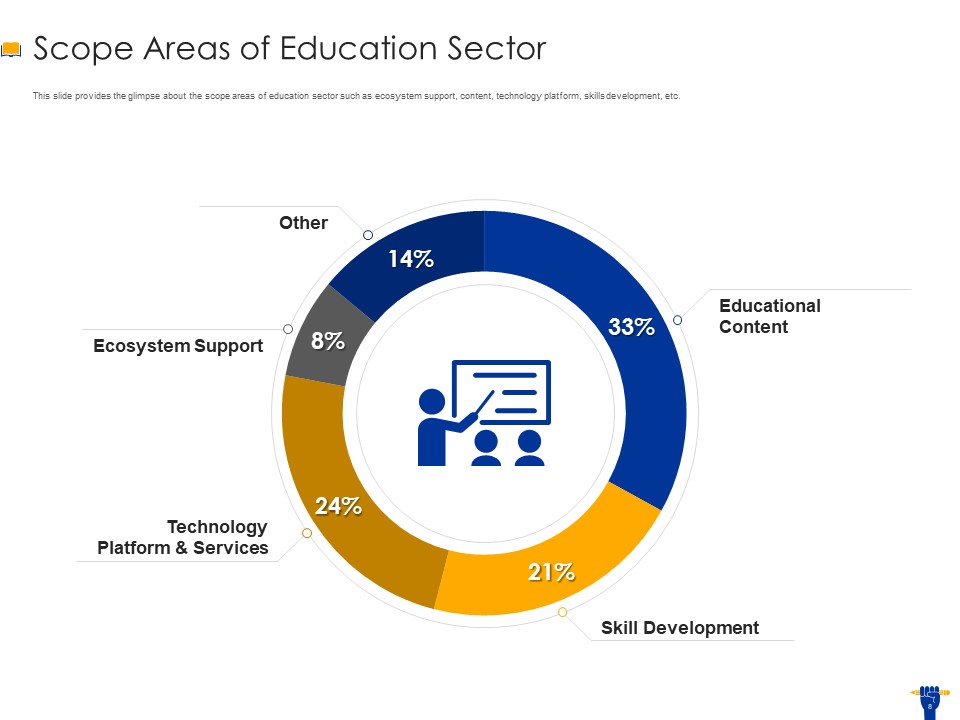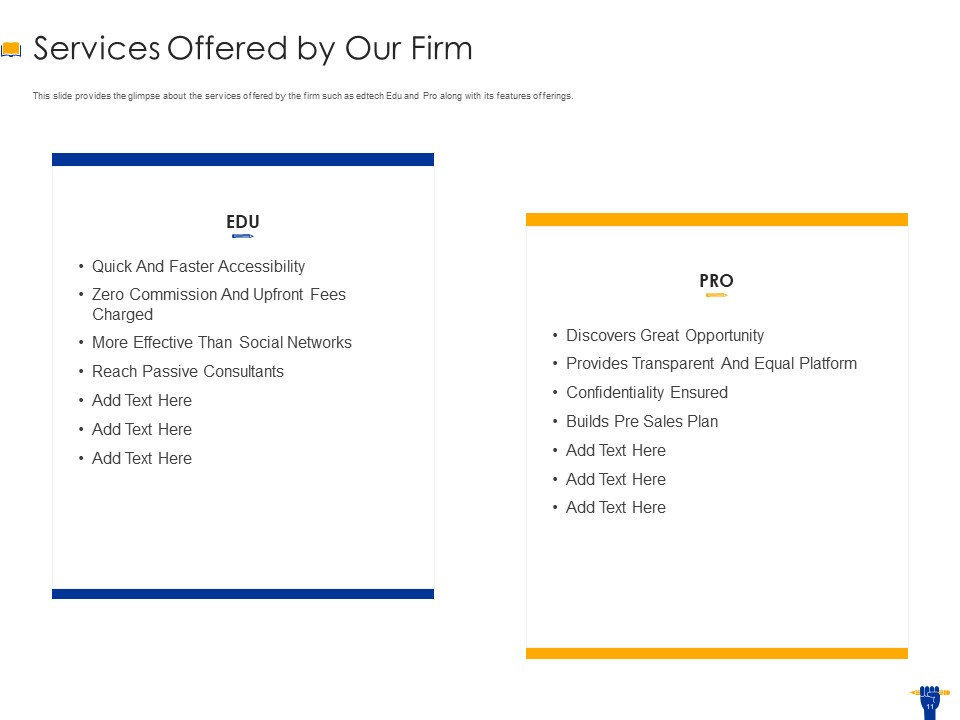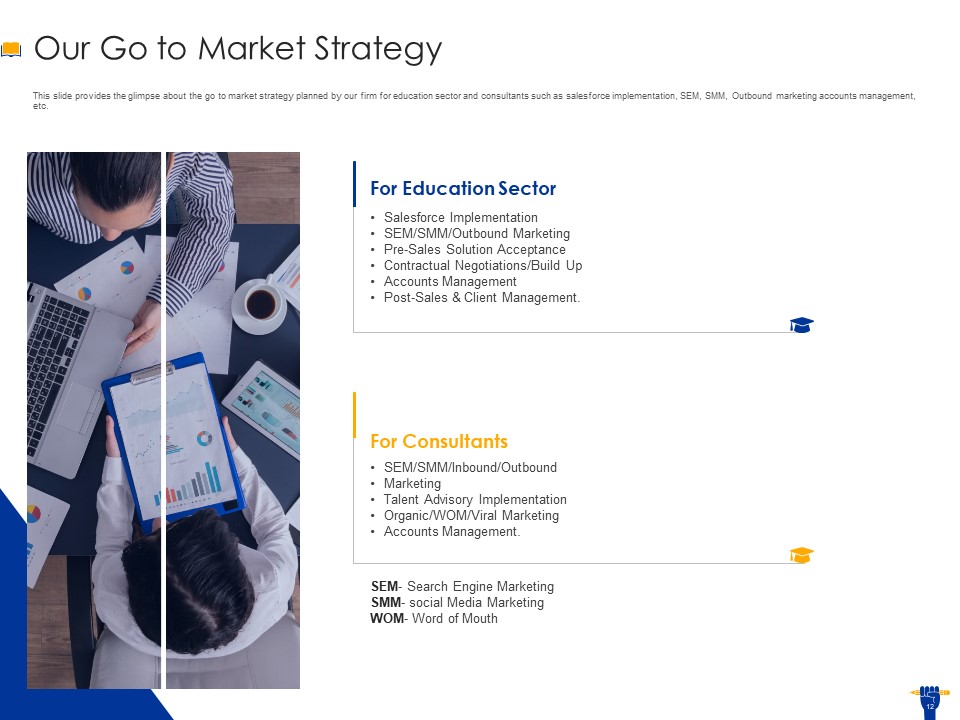The global education industry is now worth Multi-Trillion Dollars. It's expanding and is expected to reach the mark of $7.3T by 2025.
Now, What Edtech Is?
Also known as education technology, Edtech combines computer software and hardware for facilitating learning.
This kind of computer-aided learning is not new, and it has been around since the 1950s.
Then schools, colleges, and training institutes across the globe were using the available technology such as Video-Based Training Films, Audio Cassettes, and Electronic Calculators to Make Learning More interactive.
In a nutshell, EdTech is the technology advancements from the past.
COVID-19 Pandemic and Its Impact on EdTech Industry
The COVID-19 situation had forced schools and colleges to shut down physical classes and hold online classes in all parts of the world. Thus, the need to embrace technology in the education industry accelerated rapidly.
The pandemic-induced boom catered record fund flows & top deals in the EdTech industry.
The PE/VC Fundraising during the COVID-19 crisis, especially the nine months of 2020, was incredible - $3.77 Billion, and This Was Far More Than $968 Million Raised in 2019.
Online learning scaled a new high, with Google seeing a surge of interest among internet users in its online certificate programs and LinkedIn Learning, witnessing a significant spike in users.
EdTech Sector is Booming in the Wake of COVID-19 - What Experts Say?
Overnight You Had an Entire Sector Become Significantly More Validated, Says Zach Sims, Ceo, and CO-Founder of Codecademy. The Biggest Areas of Growth You Saw Were in K-12 and Higher Education, Where People That Have Traditionally Been Teaching in Classrooms, All of Them Had to Use New Technology Tools and Move Online to Survive a Pandemic. Those Sectors Grew demonstrably.
The Growth Has Been Pretty Staggering, Says Anant Agarwal, Founder, and Ceo of Online Learning Platform Edx. We Saw a 15-Fold, Not 15%, a 15-Fold Increase in the Number of New Learners Registering on Edx During April 2020. In Fact, for the Year Through November 2020, Compared to the Year Through November 2019, the Number of New Registrations on Edx Went Up by 161%.
As per the CEO of Online Learning Platform Edx, the staggering growth in EdTech is because of the number of people who became unemployed during the pandemic. So, they started adding new skills to their repertoire to boost the odds of bagging a high-paying, stable job.
Booming, Promising & Disruptive — Its the Perfect Time to Launch Your EdTech Startup
Starting an EdTech startup is way more complicated than you may perceive.
The most prevalent mistake an EdTech entrepreneur makes is skipping market research.
EdTech is a one-big playing field, and you should narrow down on your niche.
Carefully analyze the present EdTech landscape, and determine whether the idea is unique and worth purchasing? Also, pay heed to the market shifts and competitive scenarios.
Next up is to validate your idea. Talk to industry experts and end-users to validate your assumptions.
After this, select a business model, it will define how you earn money and achieve long-term goals as an EdTech.
The popular business model options in the EdTech sector include Freemium Subscription, Free Trial Subscription, EdTech Marketplace, Ad-Based Revenue, B2B Sales, and Recruiting Model.
Each EdTech business model has its set of pros and cons.
The secret to successfully launching an EdTech product is to have on-board a panel of professionals from diverse backgrounds having practical industry experience.
You will need to hire a highly-skilled Product Manager, Project Manager, Business Analyst, UI/UX Designer, a pool of Developers, and Quality Assurance Experts.
And, finally, raise funds to build your EdTech product or promote it to increase sales.
Creating a Killer EdTech Startup Pitch Deck
When it comes to pitching your EdTech startup to investors, you'll want to make sure your deck is top-notch.
But What Separates a Good Deck From an Outstanding One?
We've reviewed some of the best-in-class pitches around and boiled them down to three key takeaways.
1. Start With Your Big Idea
Your investors will want to know why your EdTech startup is worth their time and money, and the best way to convince them is by starting with a clear and compelling articulation of your big idea.
A fantastic deck will open with this idea and introduce it early.
This is not a time for modesty - you need to be clear and direct about the problem you're solving and why investors should pay attention.
Of course, this also needs to be paired with your solution - How Will Your Edtech Startup Solve the Problem You're Addressing?
This is where you'll take all of your research and data and use it to argue that your EdTech startup is the perfect solution for the problem you're talking about.
Make sure you also talk about your target market and how you'll reach them.
2. Use Data to Back Up Your Claims
Data is essential when it comes to pitching your EdTech startup.
Not only does it help to validate your claims, but it can also be used to show how you'll solve the problem and reach your target market.
Your deck should include data in a way that's digestible for investors, so avoid graphs unless you're a data visualization expert.
Instead, pick a few statistics from your research and showcase them in easy-to-read charts.
Combine this with quotes from industry experts and articles that support your idea, and you'll be able to back up your claims in an easy-to-understand way.
This is especially important if you're not well known in the EdTech space - data can help establish you as a credible player.
3. Use Visuals to Explain Your Concept
Using visuals in your EdTech startup pitch deck is one of the best ways to capture your idea.
Take a look at our article, How to Get Your EdTech Startup Funded, for an in-depth look at how visuals can improve your pitch and help you secure funding.
Since we're on the topic of EdTech, try using a pie chart to show your market share or how much money you've raised.
Graphics are also a great way to explain complex concepts, so if you can find a way to illustrate your solution using a visual, it will help you reach EdTech investors.
At the same time, don't go overboard with your visuals and use too many images, or your deck could get cluttered.
Your goal is to work visuals into your pitch in a way that makes sense and supports your claims.
By following these three tips, you'll be able to create an EdTech startup pitch deck that will impress investors and help you secure funding.
Click here to explore the world's largest collection of Pitch decks
What Slides Should You Include in Your Edtech Startup Pitch Deck?
Slide 1: The Cover Slide
The title or the cover slide aims to give enough time to the host of the presentation to introduce themselves to the investor audience with this slide in the background.
The image is relevant to the EdTech industry, and it grabs the audience's attention in the first few seconds itself.
The slide mentions the agenda, EdTech Pitch Deck, and the Company Name.
The font, colors, and graphics should be cohesive and match your company's branding guidelines.
Download Edtech Pitch Deck Template
Slide 2: About Out EdTech Firm
The goal of the About or Company Overview slide is to introduce the EdTech product to potential investors.
It should also highlight your product's competitive advantages, such as Quality Experts, Customized Learning, Measurable Impact, and Continuous Reinforcement.
Download Edtech Pitch Deck Template
Slide 3: Problems Faced By Companies
The problem slide is the one most often used in any presentation, and it's the second or third slide most likely to be seen, right after the introduction slide.
The problem slide in the EdTech pitch deck is used to introduce the problem that your product or service intends to solve.
There's a Lot of Advice Out There for What to Put on the Problem Slide, Including:-
- Illustrate or List Bullet Points About the Problem You Are Solving.
- Use Statistics to Back Up Your Points.
- Use Images to Help Explain the Problem.
- Keep Your Language Clear and Concise.
However, There Are a Few Things to Avoid When Creating Your Problem Slide. Here Is a Few:
- Don't Make the Slide Too Long - You Want to Introduce the Problem, Not Give an Entire History Lesson.
- Avoid Too Much Jargon or Technical Language - You Want to Make Your Points Clear to Your Audience, Even if They're Not Experts in the Field.
- Don't Be Too Negative - You Want to Be Solutions-Oriented, Not Focused on the Negative Aspects of the Problem.
Download Edtech Pitch Deck Template
Slide 4: Solutions Offered By Our Firm
The solution slide in an EdTech pitch deck is often one of the most important slides in the presentation.
This slide lays out the proposed solution to the problem identified in the previous slide. In our solution slide, we have divided it into three key benefits of the EdTech product.
First is the Accessibility & Transcaprecency, second is Simplicity & Flexibility, and finally, Track & Mesure Impact. Each benefit is explained with valid points.
Download Edtech Pitch Deck Template
Slide 5: Need of EdTech
The slide is similar to the market opportunity slide in an investor presentation; therefore, something you cannot overlook.
The slide details the Need for EdTech for both the "Education Sector" and "Consultants." Rather than thoroughly explaining the market opportunity to the investors, this slide put forth bullet points that round up the perks of EdTech to each segment.
The benefits could include Search, Credibility, Budgeting, and more for the Education Sector, as mentioned in this slide.
On the right-hand side, one column highlights the key statistics related to the Need for EdTech, including 65% of Employees who Want Self-Directed & Independent Learning.
Download Edtech Pitch Deck Template
Slide 6: Scope Areas of Education Sector
The slide has a pie graph that presents an overview of scope areas of the Education Sector.
These scope areas include Educational Content, Technology Platform & Services, Ecosystem Support, Skill Development, Etc.
The percentage market share for each scope area is illustrated through this pie graph.
Download Edtech Pitch Deck Template
Slide 7: Audience For Consultancy Sector
The slide lists out the audience of the consultancy sector such as Training, Supplies, IT, Furniture, Assemesnet, and Teaching.
The market share for each audience type is defined through a well-illustrated pie graph.
The data interpreted from the pie graph is presented in a tabular form on the right-hand side.
Download Edtech Pitch Deck Template
Slide 8: Services Offered By Our Firm
The purpose of the slide is to break down what services your Edtech firm provides quickly. The slide should highlight the company's selling points and help investors.
In our template, we have divided the services into segments, one is EDU, and the other is PRO.
The features listing for each service is defined as bullet points for the audience to quickly understand the services offered.
Download Edtech Pitch Deck Template
Slide 9: Our Go-to-Market Strategy
When starting a new business, one of the most important decisions you'll make is to market and sell your product or service.
A well-crafted go-to-market strategy can propel your business to a thriving and profitable company from the startup phase. And, investors emphasize the Go-to-Market Strategy before making the investment decision.
This slide will help investors understand how you plan to reach your target market and generate revenue.
A go-to-market strategy is a key to success for your business. This slide will help investors understand how you plan to reach your target market and generate revenue.
There Are a Few Things to Keep in Mind When Creating This Slide:
- Define Your Target Market
Your target market is the specific group of people you target with your product or service. You should clearly define this group and explain why they are the best fit for your offering.
- Explain Your Sales Strategy
Your sales strategy is how you plan to reach your target market and generate revenue. This could include things like marketing, lead generation, and sales channels.
- Describe Your Go-to-Market Timeline
A go-to-market timeline is a clear explanation of when you plan to get up and run. This should include when you expect to launch your product or service and when you expect to start generating revenue.
Download Edtech Pitch Deck Template
Slide 10: Our Team Management
When you're pitching your startup to investors, you'll likely have a slide deck that contains information about your team.
This slide should list the key members of your team and what they bring to the table.
Your team's experience and skills are important factors that investors will consider when looking at your startup.
This team slide is a critical place for you to communicate that information.
However, how you present your team's experience and skills can make or break your pitch.
.
Download Edtech Pitch Deck Template
SlideTeam - We Create The Perfect Funding Proposal
A powerful pitch deck can be the difference between a successful or unsuccessful EdTech startup.
To help you draft an effective presentation, we've created this comprehensive guide to drafting your unbeatable EdTech Pitch Deck.
Whether you are looking for funding from angel investors, venture capitalists, private sector organizations, or government grants, these guidelines will make it easier than ever before to craft a compelling presentation that gets results.
With over 20 pages of templates and slideshows ready at your fingertips in PowerPoint format—including high-quality graphics and images—this extensive resource is sure to set you up for success no matter how large your enterprise grows.
Become a member today for $49.99 per month and Download TEN Ppts for Free.
Download the free Edtech Pitch Deck Template PDF.
Click here to explore the world's largest collection of Pitch decks


![How To Draft a Powerful EdTech Pitch Deck To Raise Millions of Dollars? [Free PDF Attached]](https://www.slideteam.net/wp/wp-content/uploads/2022/01/Banner_design_179b-1013x441.png)


 Customer Reviews
Customer Reviews



























